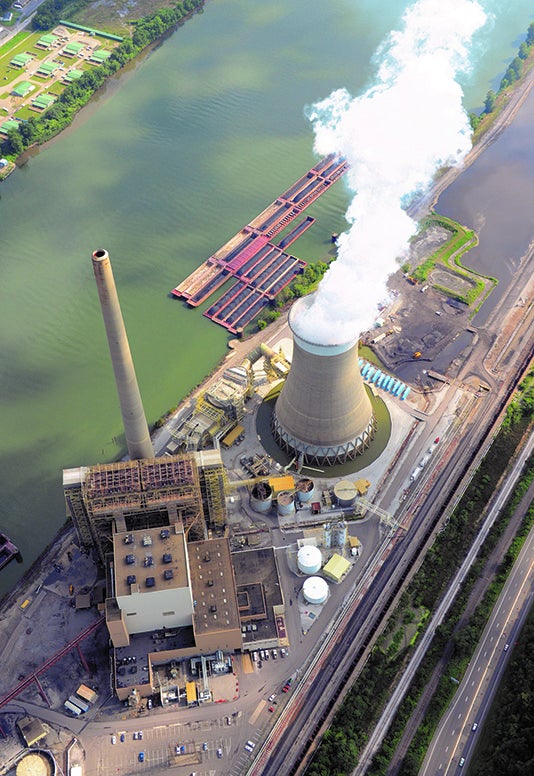What’s one thing that everyone dreads looking at right now? The price tag.
Inflation, as measured by the U.S. Bureau of Labor Statistics Consumer Price Index Summary, jumped 8.3% in August compared to August of 2021. This was the largest annual increase since Nov. 1981.
While everyday household items like fresh chicken (up 28% from August 2021 to August 2022), coffee (up 20%), butter (up 73%), and even eggs (up 82%) have all jumped, the biggest pain has been at the pump (more to come on that below).
Your cooperative is facing our own share of difficulties amid this economy, rising generation costs, and the current state of the electric utility industry. Everyone knows costs are increasing… but what’s the real impact?
Fuel
According to the AAA Gas Prices calculator, in Ohio, the average gas price at the time of publication (September 2022) is $3.56; the average diesel price is $5.02. One year ago, the Ohio gasoline average was $3.03; the diesel average was $3.33.
For Ohio, that means gasoline jumped 17%; diesel surged 50%. Earlier in the year, it was even higher.
For Midwest Electric, the impact is magnified. In 2021, we spent $78,000 on fuel and drove 246,000 miles with our trucks, vehicles, and fleet. Through June 2022, we spent $45,000 on fuel and drove 112,000 miles. (Note this is only halfway through the year).
Completing new services, fixing poles, and restoring outages — all needed to grow and maintain our system — mean we have to transport our equipment and staff across our service territory, which spans from Fort Recovery up to Columbus Grove.
Material
Ready for sticker shock? This shows the percent increase of various electrical materials and parts of a pole assembly from 2021 to 2022. The lowest increase on this list is 5% (the cost of a pole), but underground wire has spiked 71% since last year.
Back in 2020, a 50 KVA pad-mount transformer cost Midwest Electric an average of $1,618. This April 2022, that same transformer costs us $2,293 (that’s a 42% increase!). What about buying refurbished? Last we checked, that same transformer costs $5,065 refurbished, mainly because of supply shortages — and the wait list for a transformer is out until fall 2023.
These cost increases aren’t going away, and your co-op is having to plan (and budget ahead) to stay ahead.
Transmission
Transmission costs — or the cost to transmit power many miles from our plants to local substations — are surging with the local growth in our area. Midwest Electric’s average monthly transmission network demand charges, billed by grid operators PJM, increased in 2022 to $385,441 (up 13%).
Power Cost Adjustment
 The cherry on top —the biggest expense Midwest Electric has — is power cost, or the cost of electricity generated by our plants (like Cardinal Power Plant pictured above) and delivered to your home. As commodity prices increase, the cost to generate electricity increases. Our wholesale power supplier, Buckeye Power, charges Midwest Electric for the generation and transmission of the electricity our members use, and that cost is passed on to our members through the power cost adjustment (PCA).
The cherry on top —the biggest expense Midwest Electric has — is power cost, or the cost of electricity generated by our plants (like Cardinal Power Plant pictured above) and delivered to your home. As commodity prices increase, the cost to generate electricity increases. Our wholesale power supplier, Buckeye Power, charges Midwest Electric for the generation and transmission of the electricity our members use, and that cost is passed on to our members through the power cost adjustment (PCA).
Overall, the Buckeye price of power has increased nearly 6% this year. The leading driver is transmission cost (mentioned earlier), which has increased almost 13% this year alone.
Back in 2015, Midwest Electric’s purchase cost per kilowatt-hour was 0.0701. It’s been creeping up steadily; Through August 2022, our purchase cost per kWh is up to 0.0752.
Midwest Electric does our best to keep rates as steady and affordable as possible for members; our management team, CEO, and Board of Directors works hard to keep controllable costs down — however, expenses like wholesale power costs are out of our hands and must be recouped for the co-op (a not-for-profit entity) to stay financially stable.
As conditions change, rest assured your cooperative will do its best to keep members informed of rising expenses. Despite current cost aches and pains, Midwest Electric’s vision looks ahead to a brighter future. When it comes to the best interest of our members, we keep a long-term strategic outlook.

